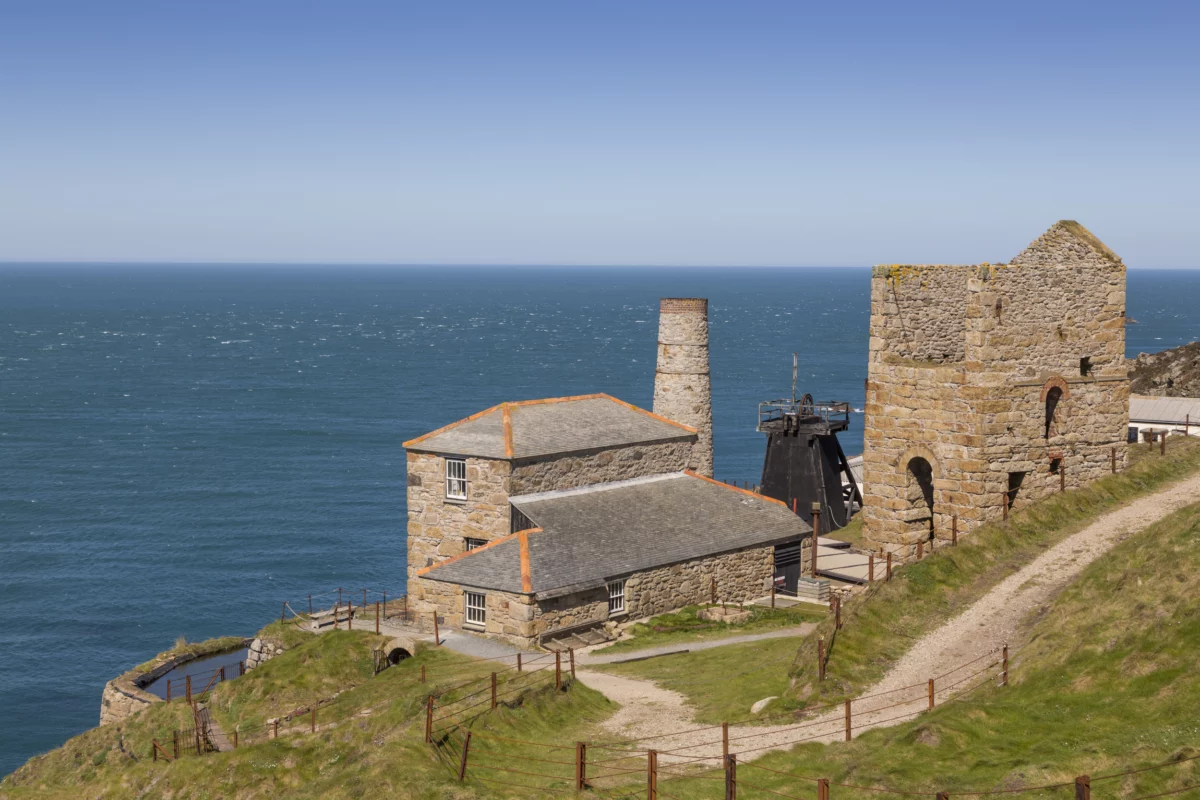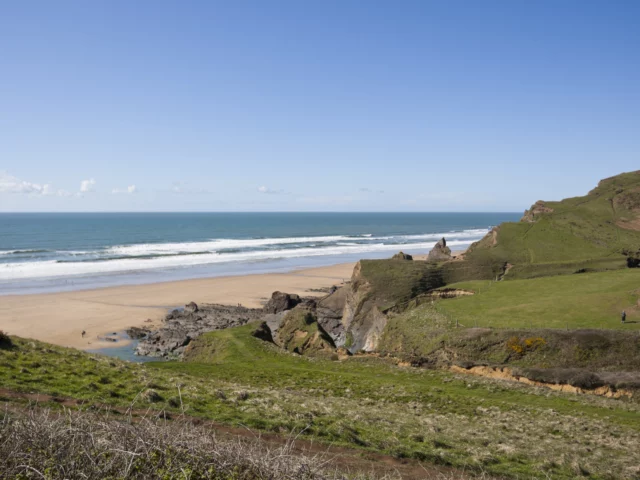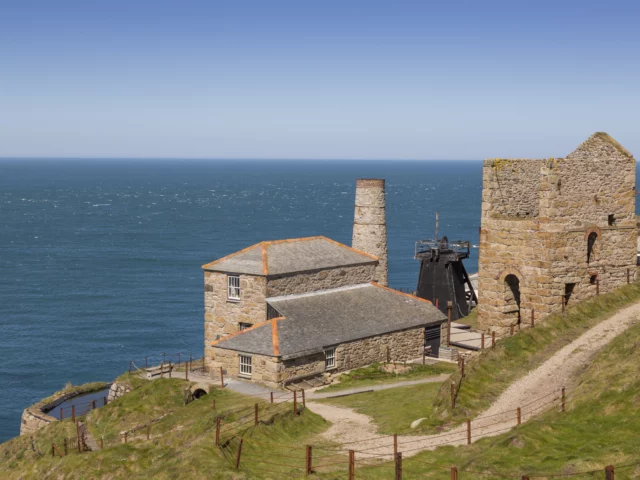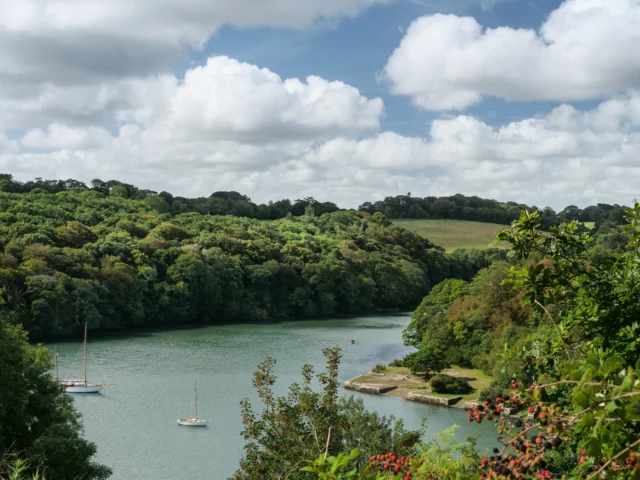- The Great Cornwall Guide
- Destinations
- Things to do
- Beach Guide
- Food & Drink
- Properties
- Journal
- Golden Lobster Reviews
- Destinations

Levant Mine and Beam Engine, Cornwall. High on the cliffs overlooking the Atlantic, Levant was one of Cornwall's champion mines for over 100 years. ©National Trust Images Chris Lacey
Here in beautiful Cornwall we’re lucky enough to have over 50 National Trust sites to visit across the county. Did you know that over half of the Cornish coast is owned by the National Trust? In fact, the National Trust look after a staggering 780 miles of coastline in the UK. They also care for and preserve Cornwall’s industrial heritage sites such as fishing coves and tin mining sites, so you’re never far away from a National Trust site in the South West.
We understand that you won’t have time to visit each and every one, so we’ve rounded up five our our favourite National Trust spots to put on your Cornish bucket list. There’s something for history buffs, nature enthusiasts and those who just want to upload a stunning picture on Instagram.
Happy exploring…

The cliff top above Sandymouth, Cornwall. ©National Trust Images Ben Selway
The National Trust look after more than 780 miles of coastline, all year round, from sandy coves and rocky bays to coastal paths with uninterrupted views of the sea. One of our favourite beaches that they care for is Sandymouth, which is located at the most eastern tip of North Cornwall just outside of Bude.
There are lots of reasons to love Sandymouth; it’s lifeguarded, has great surf, is dog friendly plus has a Trust car park, seasonal café and toilets. Much quieter and less exposed than Bude’s main beaches, Sandymouth is a popular but unspoilt beach of pebbles and sand backed by incredible twisted cliffs. Pet owners will be delighted to hear that there’s a dog waste bin, and a bowl of water and free poo bags available at the car park hut when staff are present.
It also lends itself to some incredible walking routes. Set off from Sandymouth beach and follow the South West Coast Path to Duckpool before returning along the same route. Views stretch far along the coast with clifftops adorned with wild flowers during the summer.

Levant Mine and Beam Engine, Cornwall. High on the cliffs overlooking the Atlantic, Levant was one of Cornwall's champion mines for over 100 years. ©National Trust Images Chris Lacey
Known as ‘wheals’ (Cornish for work/working) the instantly recognisable engine houses of the tin and copper mines sit near mine shafts, and there are over 200 of them dotted around the UNESCO Cornish Mining World Heritage Site. Many are listed buildings, as well they should be because metal mining provided essential raw materials to feed the hunger of the Industrial Revolution.
Levant Mine and Beam Engine, sitting perched on the exposed cliffs of the Tin Coast in the far west of Cornwall, is full of rich history. A restored 1840s beam engine (the only one in the world) runs on whooshing steam. The National Trust run guided tours at Levant, which need to be booked in advance. During the tour you’ll gain an insight into the community who lived and worked here, you’ll be able to see the only steaming beam engine in the world, and the tour includes a visit down the Man Engine tunnel where 31 men tragically lost their lives in 1919.
Parking is at Geevor Mine, a quarter of a mile up the coast from Levant, which is accessible via the stunning coast path.

View of the house and yew trees at Lanhydrock, Cornwall. ©National Trust Images Gesine Garz
Stunning Lanhydrock situated just outside of Bodmin, is certainly worth a visit. A truly magnificent late Victorian country house, there’s plenty to explore with extensive gardens and wooded estate.
During your visit to Lanhydrock you’ll see how different life was ‘below stairs’, and how opulent the spaces are ‘upstairs’ – from elegant dining room to grand bedrooms. The outside is just as impressive, if not more so. Meander through the extensive gardens, which colours will vary depending on what time of year you visit. Those of a green-fingered nature will not be disappointed, as the Lanhydrock showcases beautiful herbaceous borders and higher gardens bursting with colour from camellias, magnolias and rhododendrons.
Stroll along the ancient woodlands and peaceful riverside paths, or if you prefer the faster pace there are off-road cycle trails, with special routes for families and novice riders. No bike? You can hire one when you’re there.

Roundwood Quay seen from Trelissick, Cornwall. ©National Trust Images Hilary Daniel.
Trelissick near Falmouth, with panoramic views over the Fal estuary, is set on its very own peninsula. The wider estate has over 300 acres, take in the maritime views as you meander through the diverse countryside and panoramic parkland or venture out into secluded oak woodlands.
On your way you’ll come across exotic plants and herbaceous borders bursting with colour. Dog owners will be pleased to hear that four-legged friends are welcome too, and we’re sure they’ll enjoy exploring as much as you do.
Lunch is taken care of with Crofters café, which offers a delectable selection including afternoon cream teas and packed lunches for young visitors. Trelissick also has its own art gallery run by Cornwall Crafts Association and showcases a wide range of work from local Cornish artists. Plus, there’s a gift shop and second-hand bookshop, too.

The Marconi Centre at Poldhu, Lizard, Cornwall. The Centre marks Marconi's wireless telegraphy experiments in 1900. ©National Trust Images David-Sellman
Marconi on the Lizard showcases some true Cornish history. In 1900 an Italian inventor named Guglielmo Marconi – hence the centre’s name – undertook ground-breaking wireless experiments on The Lizard.
On 12th December 1901 Marconi sent a signal 2100 miles from Poldhu to Newfoundland, and later used this location for his shortwave experiments, including the Beam Wireless Service for the British General Post Office.
The station at Poldhu operated until 1933, and it wasn’t until 2001 when the National Trust and Marconi PLC the Marconi Centre opened the centre to mark the centenary of Marconi’s transatlantic signal. You can visit the two local stations here in Cornwall, and see how the inventor developed technology that was the stepping stone for today’s instant world-wide communication.